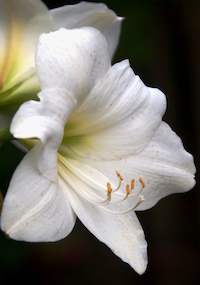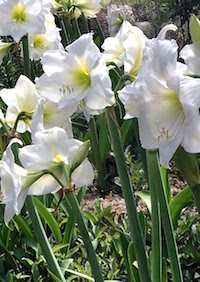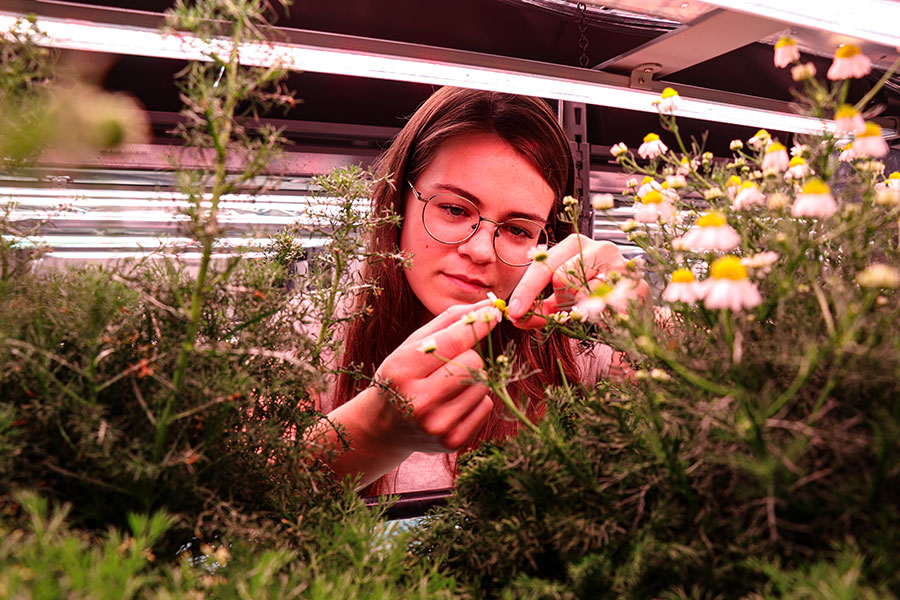If I told you that the name of the most beautiful bulb you could grow was contrived from Greek words meaning “head of a horse,” then you probably could not conjure up the vision of an amaryllis. Known for being so exquisite in spring gardens in the South, the amaryllis’ botanical name is Hippeastrum, meaning “the head of a horse.”
I assure you that it’s not Trigger, Roy Rogers' horse. A show happens each spring just within sight of our fairy-like gazebo in the Cottage Garden that draws the attention of cameras and visitors like few other plants — it’s the ‘Wedding Dance’ amaryllis. It’s the perfect name for an amaryllis located at the site of almost weekly weddings.
This hybrid amaryllis produces stalks that exhibit several enormous, pristine white flowers measuring up to 7 inches in width. Ours has been producing for weeks and, while most bulb catalogues and vendors suggest stalks 16 to 20 inches high, ours are sturdy and easily hitting 32 inches.
Amaryllises, for the most part, are considered bulbs for zones 8 to 10, but ‘Wedding Dance’ can be grown in zone 7b and possibly colder zones, according to Tony Avent with Plant Delights Nursery. Avent commented that they endured -1 degree Fahrenheit in 1996.
Here at the Coastal Georgia Botanical Garden at the Historic Bamboo Farm in Savannah, Georgia, we haven’t had temperatures nearly so challenging — 18 F a couple of years ago and 25 F this March after the garden was seven weeks ahead of schedule. The St. Joseph’s lily, Hippeastrum x johnsonii, produces deeply saturated red flowers with a pronounced white star and packs even more landscape cold tolerance.
Gardeners all over the country can enjoy the amaryllis, whether in the landscape or as one of the most-loved Christmas plants forced indoors. Outdoors they prefer fertile, well-drained soil. Ours get morning sun and late-afternoon shade. In the landscape, we treat them much like narcissi. We will deadhead flowers and leave foliage until it wants to go dormant.
Depending on where you live, you may buy yours for planting in a pot at Thanksgiving and celebrating the bloom at Christmas. Your soil mix should be light and airy. Whether going in the landscape or in a pot, plant it so that the neck and top of the bulb are in view. Place the pot in a window that gets morning sun and maintains moisture.
After your amaryllis blooms, keep your plant growing until warm, frost-free temperatures arrive, then plant outdoors if you are in the proper hardiness zone. Otherwise, place your pot on the porch patio or deck and keep the foliage actively growing until it wants to go dormant in mid- to late summer. Bring your pot indoors before any chance of frost and remove leaves once they become dry and shriveled. They will need a two-month rest period before beginning the cycle again.
Those grown in the landscape in warmer regions can be left in the bed for years without separating, digging or replanting. Once bulbs finally do get crowded, they can be lifted and separated, adding plants to other areas of the landscape. Ours are growing surrounded by ‘Blue Sue’ setcreasea or tradescantia, a wonderful blue-green form of ‘Purple Heart’ setcreasea.
Ours are against a backdrop of the old-fashioned nandina that looks picturesque when you have the large, white flowers combined with red berries. The beauty would be even more dazzling if grown in front of hollies sporting red berries. I’ve basically only been touting ‘Wedding Dance,’ but know that there are hundreds of hybrids all with their own special attributes. You will most likely find them readily for sale in the fall. Make this the year you give them a try.
Follow me on Twitter: @CGBGgardenguru. Learn more about the University of Georgia Coastal Georgia Botanical Garden at the Historic Bamboo Farm at www.coastalgeorgiabg.org/.









